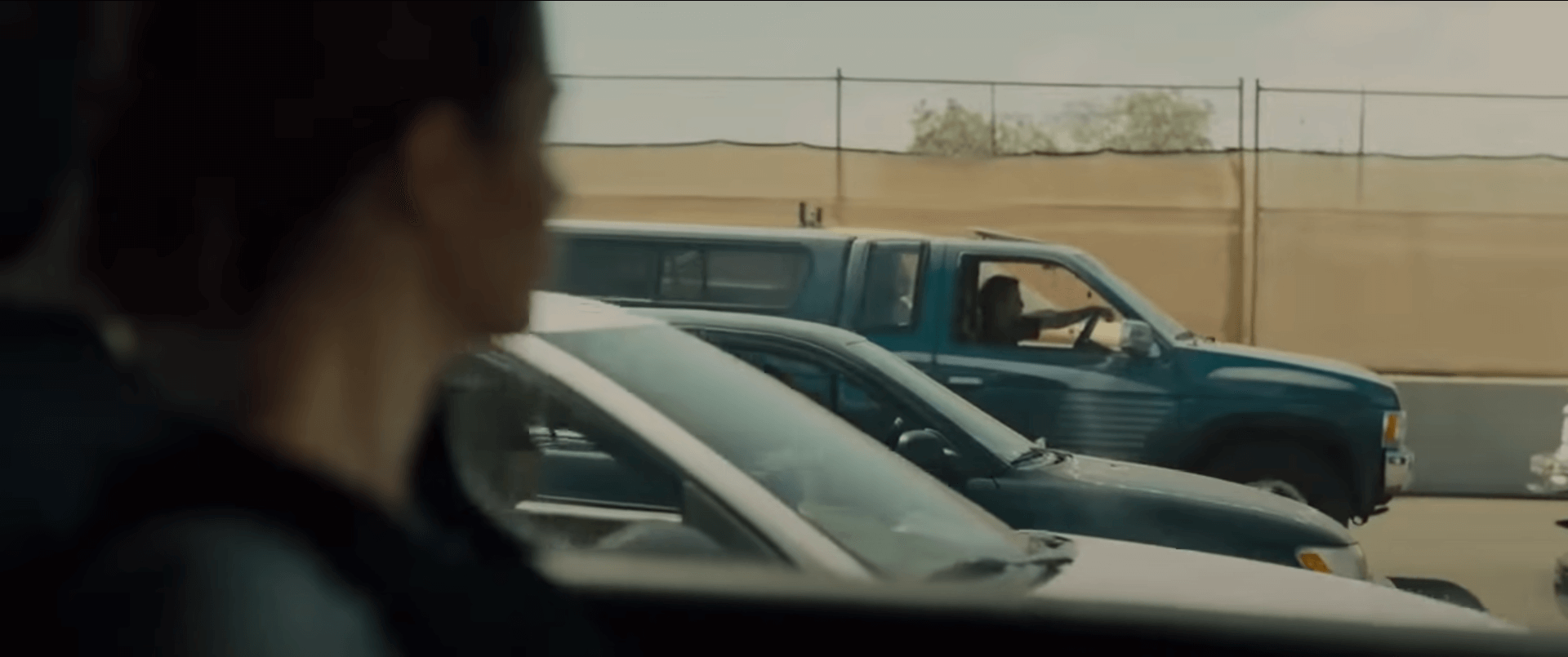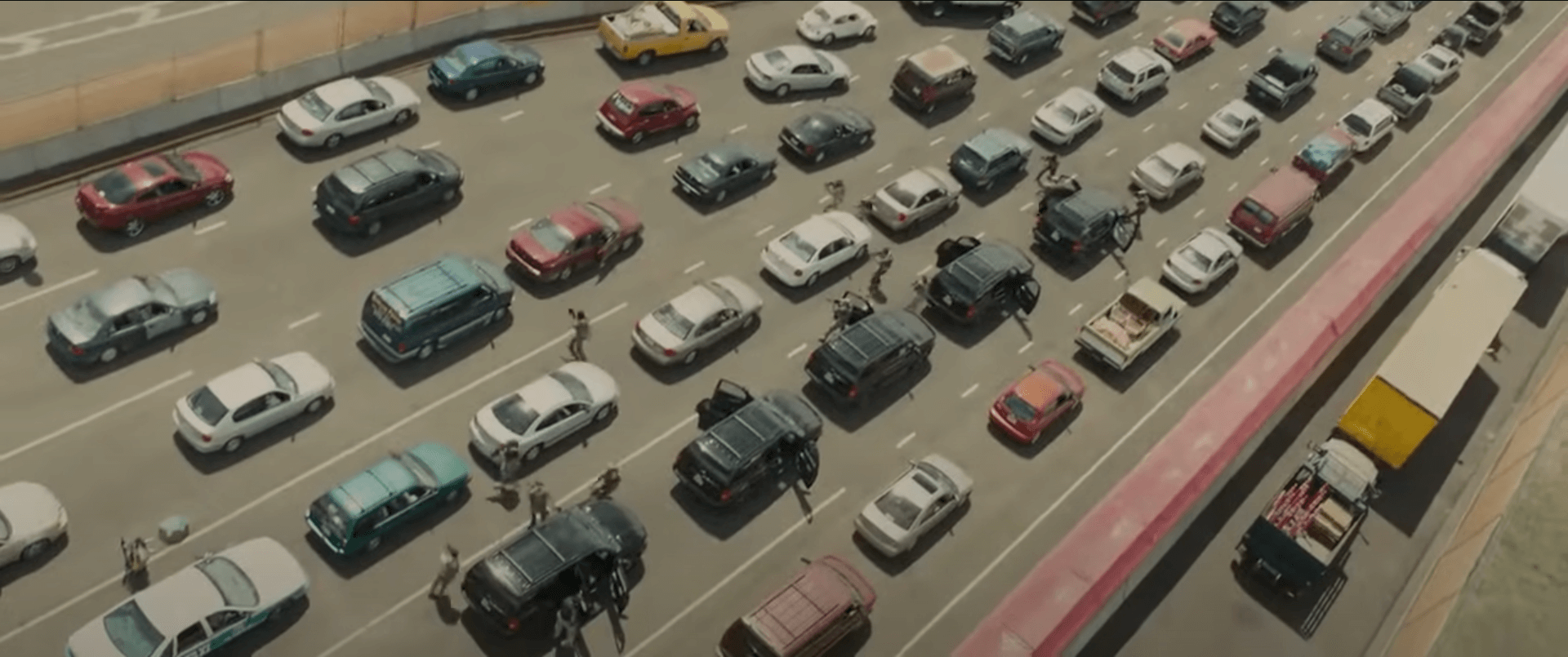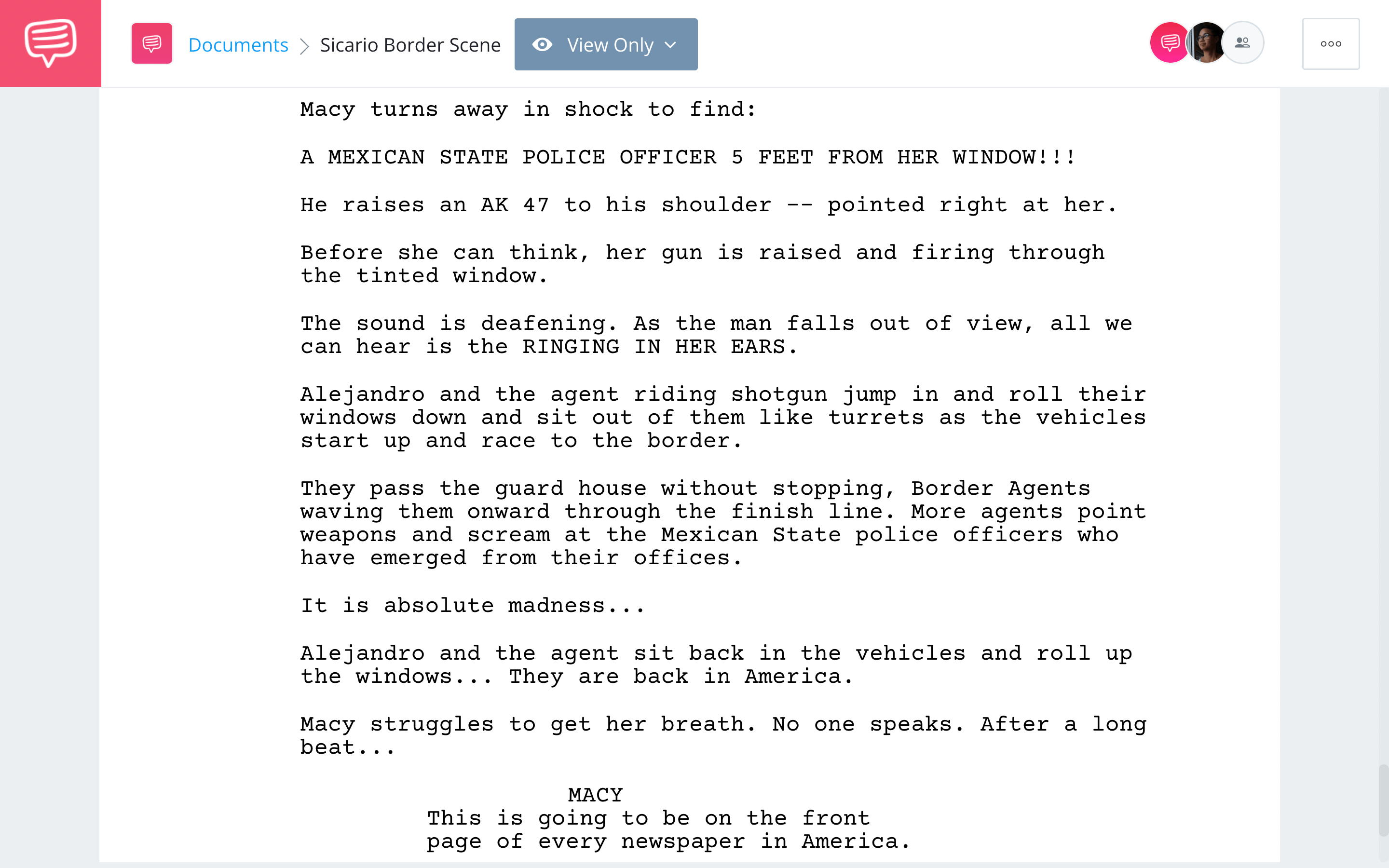There’s no question that Denis Villeneuve knows how to create a memorable scene. His distinct, visually striking style lends itself to profound cinematic moments that leave an imprint long after you exit the theater. One of such scenes is undoubtedly the Sicario border scene.
Sicario is one of Villeneuve’s most complex works, with open-ended morality and a labyrinthine plot. The pivotal border scene encapsulates these complexities in under five minutes. Let’s break down how exactly Villeneuve creates such a tense and layered sequence.
Sicario Border Scene Analysis
Set up through story
It’s difficult to have a great, impactful scene without setting it up well through the rest of the film. Sicario sets up the border scene expertly. And the key lies in the characterization of the film’s protagonist.
From the beginning, Kate Macer, played by Emily Blunt, is shown to be idealistic. She joins this mysterious Joint Task Force because of a raid on a cartel house that went wrong. In the process, Kate saw her own officers die. And she wants to get justice by taking down the cartel responsible.
Sicario opening scene • Sicario border scene explained
The world Macer is thrust into, however, doesn’t follow the clear categories of right and wrong. And the border scene is the first instance where this uncomfortable fact becomes clear to Macer.
In a way, the Sicario border scene mirrors the opening scene. We have already been shown how violence deeply affects Macer. And so we know what the stakes are for her character in the border crossing. Denis Villeneuve’s approach to depicting violence plays perfectly into this characterization.

Denis Villeneuve on violence in his films
“I wanted to have the same approach to violence that I have had in my previous films, which is to seize the point of view of the victims,” said Villeneuve. “I wanted to show the brutality of violence, its ugliness, without glorifying it or creating too much of a spectacle.”
Taylor Sheridan’s screenplay works in unison with Villeneuve’s goals. Take a look at how Sheridan describes the ending moments of the Sicario border scene on the page. Click the image below to read entire scene that we imported into StudioBinder's screenwriting software.
Sicario border crossing scene • Sicario bridge scene
Notice how Sheridan is writing through the perspective of Macer (in this draft referred to as Macy). He is careful to show how the violence is affecting her. “All we can hear is the ringing in her ears” is one of such details which situate the reader firmly in her position.
Consequently, this careful depiction of violence pays off in dividends. Not just making the violence all the more horrifying, but feeding into the themes of the film. Is this violence necessary? Who is benefiting from the never-ending War on Drugs?




Denis Villeneuve on Sicario themes
“The idea of exploring the topic of cycles of violence, and this idea of the temptation of dreaming of having people like Alejandro that can solve problems for us — all that was intriguing. The idea of being very violent and that need of having that evil or anti-evil and just knowing that violence would solve nothing.”
Because he has richly characterized Kate, Villeneuve is able to anchor the complicated Sicario border scene through her POV. We understand her concerns and her wants, and that helps drive the sequence. Also, there is the internal conflict of wanting to deescalate the situation while also needing to protect herself.
This brings us to the next crucial element of the Sicario border shootout.
Sicario Mexico Border Scene
Use perspectives
The Sicario border scene is a masterclass in perspectives. Throughout the sequence, Villeneuve hops between three primary viewpoints. The first, of course, is Kate’s, since it is her perception of the unfolding events that matters the most.


Kate watches the traffic • Sicario bridge scene
As the scene progresses, we are also introduced to the perspective of Alejandro, played menacingly by Benicio del Toro. His perspective is more clearly focused on the impending danger. Which makes sense: he is far more experienced in these situations than Kate is.
By simply having the camera more honed in on the adversaries in Alejandro’s point of view, Villeneuve is accomplishing two goals. First, setting up the coming conflict, and then flushing out the skills of one of his lead characters.


Alejandro spots the bad guys • Sicario border shootout
The final perspective employed in the Sicario border scene is an omniscient one. The geography of the sequence is complex. As a result, Villeneuve gets plenty of coverage, not limiting himself to just what his characters can see.
The most obvious example of this perspective is the aerial shots used a few times throughout the scene. Everything else stays pretty tight, so this punch out is helpful in situating where everyone is in relation to each other.


Conflict from above • Sicario border battle scene
These competing perspectives elevate the tension within the scene. Who is seeing what, and who is in the most danger, becomes a constant question. When we see Kate’s point of view, we are left wondering what we aren’t seeing? Is someone behind her? To her right? Left?
Paranoia begins to seep into the scene.
It should also be noted that while the cinematography is motivated, it also just looks good. This is no surprise: legendary cinematographer Roger Deakins was the director of photography on the project.
Says Villeneuve of the collaboration:




“I feel that working with Roger is always a privilege. When I read the screenplay, the first thing I said after realizing I had fallen in love with it is, ‘It’s a very Roger Deakins project.’ […] Each shot with Roger has its own singularity and its own strength.”.”
— Denis Villeneuve
For more, read our breakdown of Sicario's cinematography. Now, let's move onto how editing plays a role in the border crossing scene.
Editing in the Sicario Bridge Scene
Tension in editing
Perhaps the biggest engine behind the tension of the Sicario border scene is in the editing. The film’s editor, Joe Walker, put his approach to cutting the Sicario border shootout very simply: “Things are slow and then they’re suddenly very fast.”
This seemingly basic approach works wonders. As tension increases, the cuts get slower and slower, forcing the audience to marinate in each shot, looking for potential enemies in the sea of cars.
Walker liked to cut to the wide aerial to further ratchet up this tension. “You look at [the wide shot] and you just go, ‘Well there’s nowhere to hide in this place,’” said the editor. “There is threat all around.”
Take a look at a longer interview with Walker here, where he gets more in depth on his overall approach to the film and how he likes to build tension, particularly in the Sicario border scene.
Joe Walker interview • Sicario bridge scene
This slow pace ends as soon as the action picks up. Using quick montages and a plethora of coverage, Walker and Villeneuve create the sense of chaos and confusion — Kate is overwhelmed and panicking.
These quick cuts are also employed to emphasize the horror of the killing, amplifying Villeneuve’s stark approach to depictions of violence.
“There’s one shot which is the point of view from somebody in the back of the car and it’s just a spray of bullets and the guy is letting off his weapon in the back seat, it’s going through the bodies and there’s blood sprayed,” Walker details. “But we’re talking about frames. It’s red and it’s loud so you wince when you see it. It knocks your head back.”
In other words, Walker’s editing in the Sicario border scene emphasizes just how quick and brutal a violent encounter like this can be. In a matter of seconds, the rules are thrown out the window and people are dead.
The Sicario border scene embodies everything that makes the film as a whole work. It is a masterful use of tension, depicting complex characters in even more complex situations. There’s no winning in this world.
UP NEXT
Denis Villeneuve Dune Techniques
Now that we’ve looked at the Sicario border scene, it’s time to see how Villeneuve uses some of the same techniques on a much larger scale. Villeneuve’s Dune is a massive epic unlike many other modern films. Check out our analysis of his approach in the blockbuster.
Up Next: Dune Directing Techniques →
Showcase your vision with elegant shot lists and storyboards.
Create robust and customizable shot lists. Upload images to make storyboards and slideshows.

